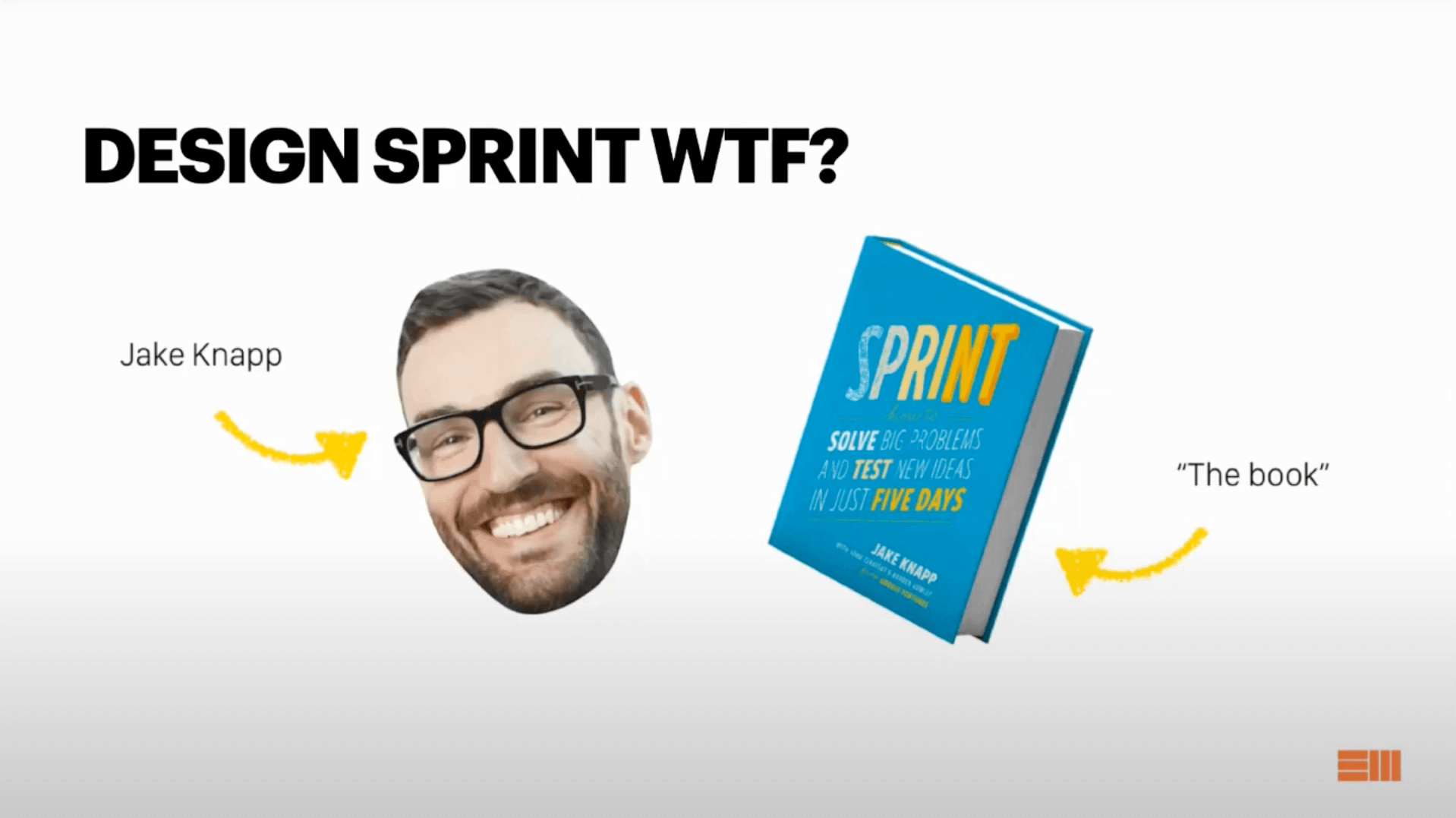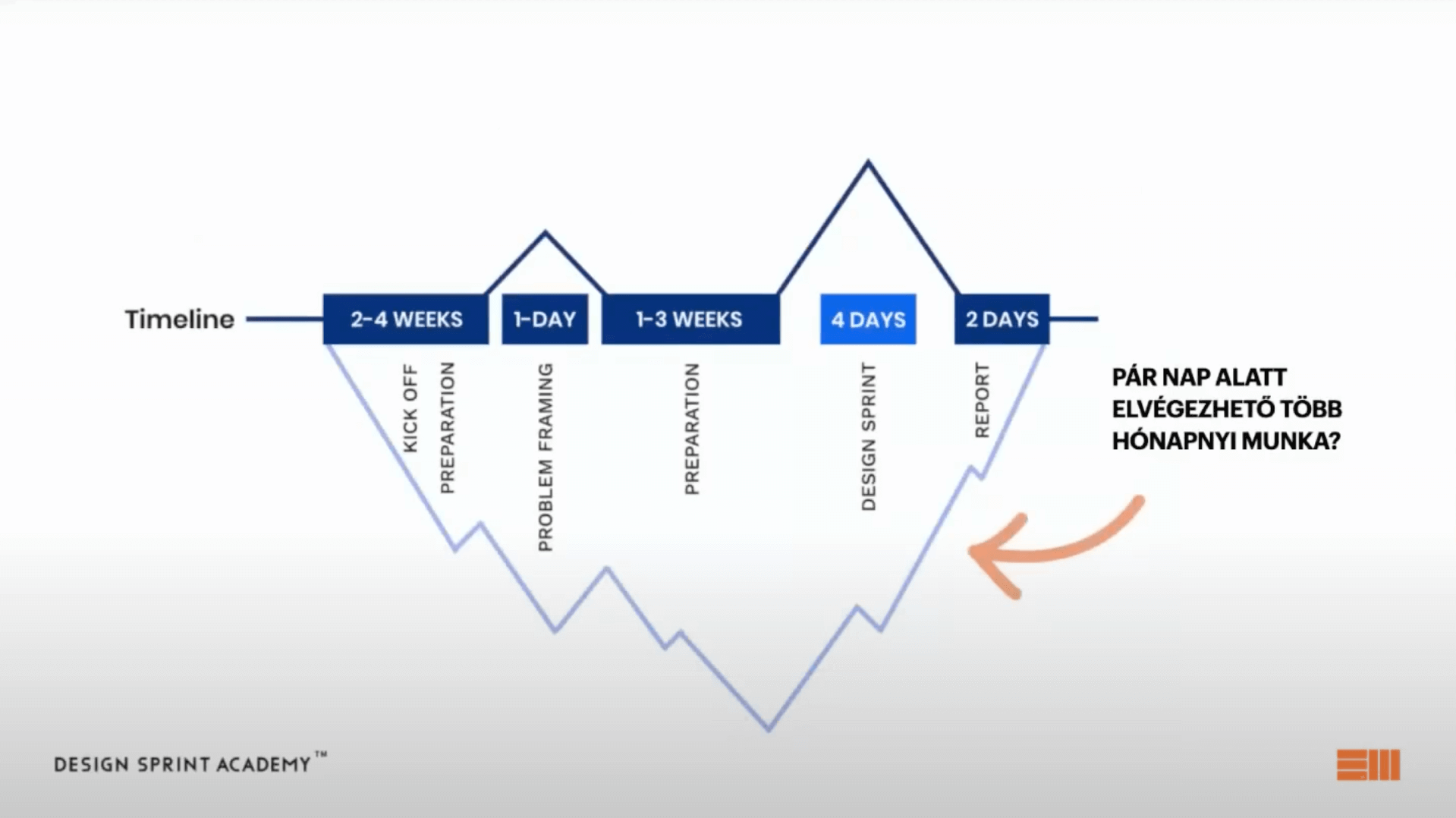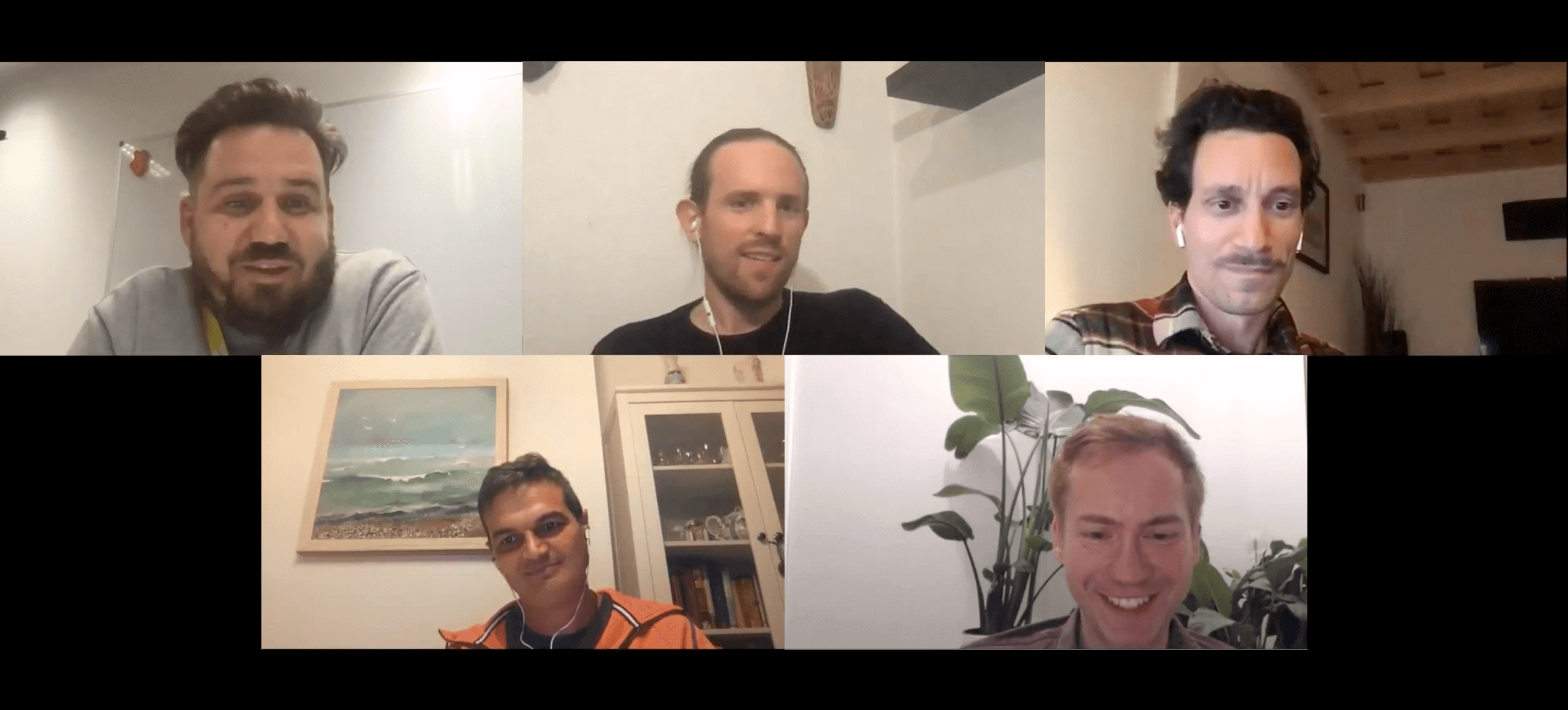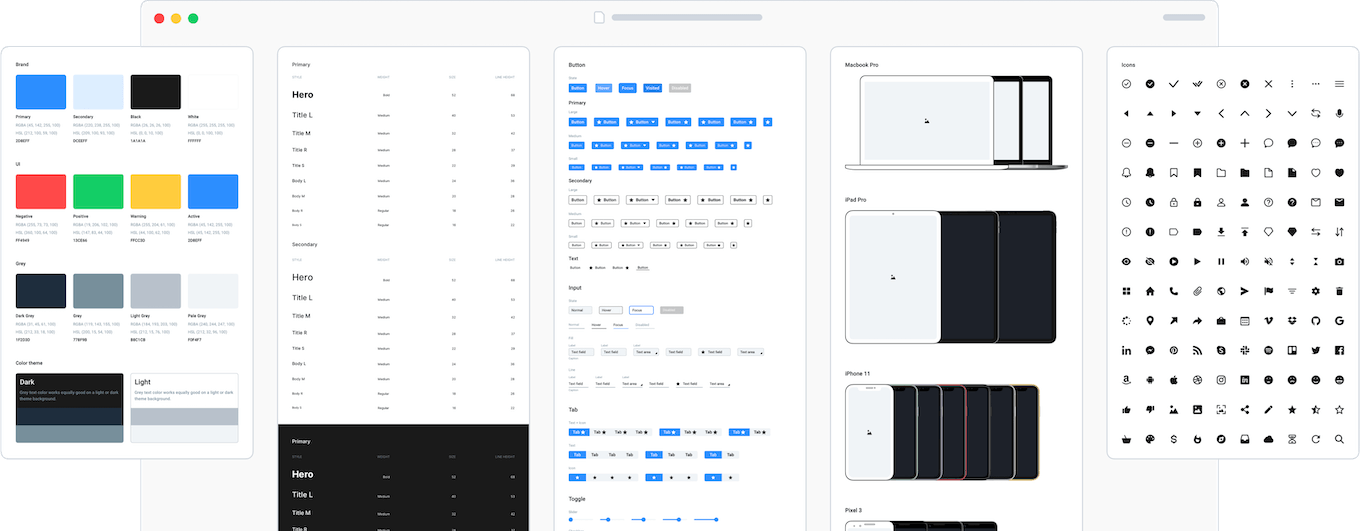Design Sprint: is it really a new era in UX design?
Ergomania is committed to professional development, so on September 30th we held our next Product design talks webinar, about new trends and proven methods in UX-UI design.
The webinar and the following discussion was led by Dr. András Rung, the founder of Ergomania, who outlined the process of the next roughly two hours: the attendees were first introduced to the difference between Agile Sprint and Design Sprint methodologies through Péter Czakó’s presentation followed by a lecture on the Design Sprint itself.
This was followed by an insightful roundtable discussion featuring four UX veterans: László Laufer (Senior UX researcher, Google) Dávid Udvardy (Senior Designer, Sapr 3D) Csaba Varga (UX lead, Kinsta) and Peter Czakó. The final item on the agenda was a Q&A, with questions submitted by viewers during the webinar.
Design Sprint would be the new Holy Grail of UX design?
The webinar opened with Péter Czakó’s lecture titled Design sprint vs. Classic UX Methodologies, or Selection of Appropriate Ingredients for a Successful Project.
As a design strategist for the Ergomania product, Péter placed the Design Sprint in the focus of his lecture. As he put it, he is quite subjective regarding this issue, although his opinion is based on 30 years of professional experience. One of these opinions is that Design Sprint is one of the most common buzzwords among designers today.
The roots of Design Sprint go back to the 80s
Design Sprint is treated as if it could solve all the problems, almost by default, and is often mixed with agile sprint. In Peter’s definition Design Sprint is primarily the methodology defined by Google Ventures, which is the successor of Agile Scrum, a methodology that evolved in the early 2000s from yet another school of thought from the 80s called Design Thinking.
Agile Scrum sought to address the fundamental flaws of the waterfall method, but its shortcomings brought Design Sprint to life. The latter is an “ideal setup that we can run on our projects over a period of time” and the success can be considered as a given.
Design Sprint rose from methodological chaos
The success of Design Sprint is due to the fact that professionals around the world feel lost in the jungle of methodologies. When it comes to UX design, for example, we can say that it has become increasingly difficult to choose the right methodology, and it has also become clear from experience that the success of many methodologies is questionable.
According to Péter’s professional opinion, many UX design methodologies are useless and there are few that stand the test of time in practice. Using untried methodologies, companies usually risk quite a bit, even losing money in the end.
Agility bred a brave new world
The emergence of agility has resulted in new methodologies in product development. It was a huge gap and still is that design is difficult to fit into agile processes.
Designers are also involved in the process, and many don’t understand what they want with users — it was hard to incorporate the design approach into agile methodologies. In general, designers still learn “agility” to this day.
One result of agile methodologies is „the prototype has become the new specification”. If we want to react very quickly to changing factors, a prototype can well define the solution they want to develop.
The next stage, Design Sprint, was created by Jake Knapp
It was Jake Knapp from Google Ventures who developed Design Sprint methodology. Design Sprint is a 5-day process to quickly solve big problems, create new products, or improve existing ones. We did not cover the methodological details, we only briefly touched upon them.
Design Sprint provides a practical answer to the question of how to solve several months of work in “a few days”? Primarily by eliminating idling. As an extremely concise and focused methodology, it easily renders each methodological step into a system.
Plus, it doesn’t leave much time to ponder on one problem, because it forces participants to make quick decisions, which in turn produces results quickly. One opinion is that Jake Knapp did not invent anything new, he only transformed what many considered known into a method that could be implemented in practice.

Facts and beliefs about Design Sprint
Many people see Design Sprint as if it were a guarantee of success or successful ideas, even though Design Sprint only reduces the risk of making bad decisions when faced with a design or business problem — but that still means that bad decisions could be made when applying it!
It is also a common misconception that it can provide a solution from scratch in a few days — while reality is that Design Sprint shortens the cycle of endless debates and can compress months into a single week. It really makes development time shorter, but not by some miracle cure, but simply by finding out right away if our idea works.
It also saves emerging costs during development by not reducing the necessary costs, but helping to avoid unnecessary spending by helping us move forward quickly so we can learn about the product and user reactions before making any expensive commitments.
However, Design Sprint doesn’t help you design your entire product because it’s best to answer critical business questions. In short, Design Sprint produces tangible results instead of conversations.
Why Design Sprint has become popular?
“Sprint Gives Super Power,” says Google Ventures online, and truly gives you a sense of superpower. Being easy to learn is a matter of perspective.
If one has a prior classic UX knowledge, it is truly easy to learn, but more importantly, Design Sprint can be mastered primarily through experience.
It’s really easier to learn because of easy-to-formulate questions — knowing the book can make you feel as if Design Sprint is easy to implement. In such cases, it is advisable to test it live as well to find out if this is indeed.
Is Design Sprint really just for designers?
Not at all. Anyone can use it, it is even recommended to apply it during development. Design Sprint is not just an area for designers because it is based on teamwork and involves all of those who are in direct contact with the product and the problem they want to solve.
Whether they are product managers, project managers, strategists or consultants, they all have a place in Sprint in the first place, as product development is also a complex activity, not only for designers!
A mini Design Sprint can even be carried out within a family or circle of friends — for example, when designing the equipment of a room. The point is to have the right team composition.
Can you really complete the full development in a few days?
What does every customer want to hear? „Come on, let’s hear what you want, and in a week the design is done.” Unfortunately, that’s not how development works. While it sounds really good to be able to achieve several weeks’ worth of work with Design Sprint, the reality is that it only shortens one stage of development to a few days.
The project kick off, the preparation, the outline of the problem, the preparations for the specific development work take weeks or even months and are not affected by Design Sprint, as it can only start when all of these have been completed all after.
Is there only one type of Design Sprint?
There are now several new versions of Desing Sprint: there are concise, four- or three-day extra focused variants, some even started experimenting with the four-hour version. Of course, the more concise a Design Sprint is, the less stuff fits in it.
The Design Sprint version, employed by Ergomania, has 4 days of essential work, including a preparatory and a follow up section.

Which methodology is worth choosing?
In the classic approach, practical development is preceded by the 3Ds (Discover – Define – Design) fitting anything, within the limits of time and budget. Design Sprint, on the other hand, works with very fixed methodological tools within a tight time limit.
To decide if Design Sprint is appropriate for a given project, we need to ask (and answer) several questions.
What product, where and how to develop?
It is clear that it does matter whether we are talking about a new product or a new market or an unknown target group. In the case of redesigning something, we know what the product is, so we have users and pre-existing data, also the product profile itself is known. In these cases, Design Sprint is not necessarily the best solution.
It does matter if we work in a startup environment with forward-thinking team members focused on the job at hand; or in a corporate environment where there are other things to do besides established processes and daily routines. One of the great advantages (and risk factors) of startups is that the processes are even indefinite and thus the whole team is much more flexible.
This is why the composition of the team can decide whether it is worth using Design Sprint. Let’s be forward-thinking in a large corporate environment because it requires a lot more planning, as it’s hard to have the Stakeholders work on Sprint for a full week, just as it’s problematic to constantly delegate decision makers.
In addition, experience dictates that company management does not always send their brightest and best to Sprint, but those team members who could no longer be used for anything else in the organization.
How much scope, complexity and home office work matter?
Scope is an eternally controversial issue, as it is difficult to determine and makes pricing a hassle, but it also hinders the methodological setup itself if the size of the project is not fully known. Of course, the situation is different if we re-develop an existing product.
Whether we really want to innovate is not really an issue, because development is always about innovation to some extent. After all, if there is nothing new, we can’t talk much about development, but if it was just redesign, Design Sprint might not have been effective.
For very complex products, the basic line-up should be more made up of classic instrumentals, and Design Sprint should be limited to user-specific features.
It is worth considering how complex the product is, how rich it is / would be, and how much we want to drill deep into the problems, because it depends on whether we use classic methodologies or Design Sprint.
The coronavirus epidemic has made home office a commonplace phenomenon worldwide. One of the great advantages of Design Sprint is that it works remotely.
How Design Sprint will be the key to successful projects?
It would be fundamentally unnecessary to reinvent the wheel as the components of success are well known and also valid for Design Sprint:
- Validation: It is essential that we validate our ideas before implementation. If we don’t validate before development, we’ll most likely spend unnecessary time and resources creating things that don’t help solving design challenges.
- Fast prototyping: Prototypes are not only cheaper and faster, but the team invests less emotions in a prototype than in beautifully designed screens, especially working code.
- Well-defined scope: accurate scope is important even if we don’t anticipate full product functionality and sort out innovative features.
- Appropriate team composition: team members must be available, should be enthusiastic about the team and have progressive approach.
Mixed application of methodologies could be an ideal solution if it is not possible to clearly define which methodological approach is appropriate. If not Design Sprint, some elements of it should be used as a workshop element. Also, it is worth considering how important a factor speed is.
As Peter summed up, Design Sprint is basically a working methodology, but cannot be used for everything.
Design sprint in the use of Hungarian UX workshops (round table discussion)
Péter’s presentation was followed by a roundtable discussion with László Laufer, a Senior UX researcher at Google, Dávid Udvardy, Sapr3D Senior Designer, Csaba Varga, who is UX lad at Kinstan and Péter Czakó.

During the conversation they shared decades’ worth of experience from the world of UX as they delved deeper into the topic previously presented by Peter.
David was the first to tell us how their first and latest Design Sprint succeeded: it was used in an uncertain area in connection with an unknown product. They tried to extend it to long-term product development. Nowadays, some of it is used, such as the branch-decision process.
In David’s view, Design Sprint bridges well all the obstacles resulting from team members not being familiar with each other or the other’s work. Even a facilitator is not necessary if all participants are aware of the methodology and tasks.
However, the role of the facilitator is not negligible, and it is even extremely beneficial to have a senior on the team who is able to connect the parts into a whole.
Csaba used most Sprints as freelancer in developing startup concepts because it could be applied with amazingly good efficiency. His very first Sprint, on the other hand, was ad hoc, put together from elements. In the latest case, it has been applied to a new concept and is quite successful even in higher education.
He sees it as an advantage to have a facilitator on the sprint, but it’s not necessary for the facilitator to deal with just that — that is, the role could be fulfilled by another member on the team.
László took part in Sprints lasting for 1 to 4 days. The one-day programs were aimed at extremely intensive product prototyping. His latest Sprint was also product development in connection with a complex financial service.
In his view, one of the main strengths of Design Sprint is that each participating member realizes how feasible their ideas are. It soon turns out how the ideas used to work on paper fare in the real word.
One of the other benefits of Design Sprint is that an extroverted team member cannot really be able to stifle the opinions of more introverted members, and it’s also easier for introvert team members to express their views so all insights can actually prevail during Design Sprint.
A lot more were said during the webinar, so those interested in the views of senior experts should check out the recording of the webinar or read Péter Czakó’s presentation. The language of the presentation and the webinar recording is Hungarian.
recommended
articles
Find out more about the topic





Share your opinion with us